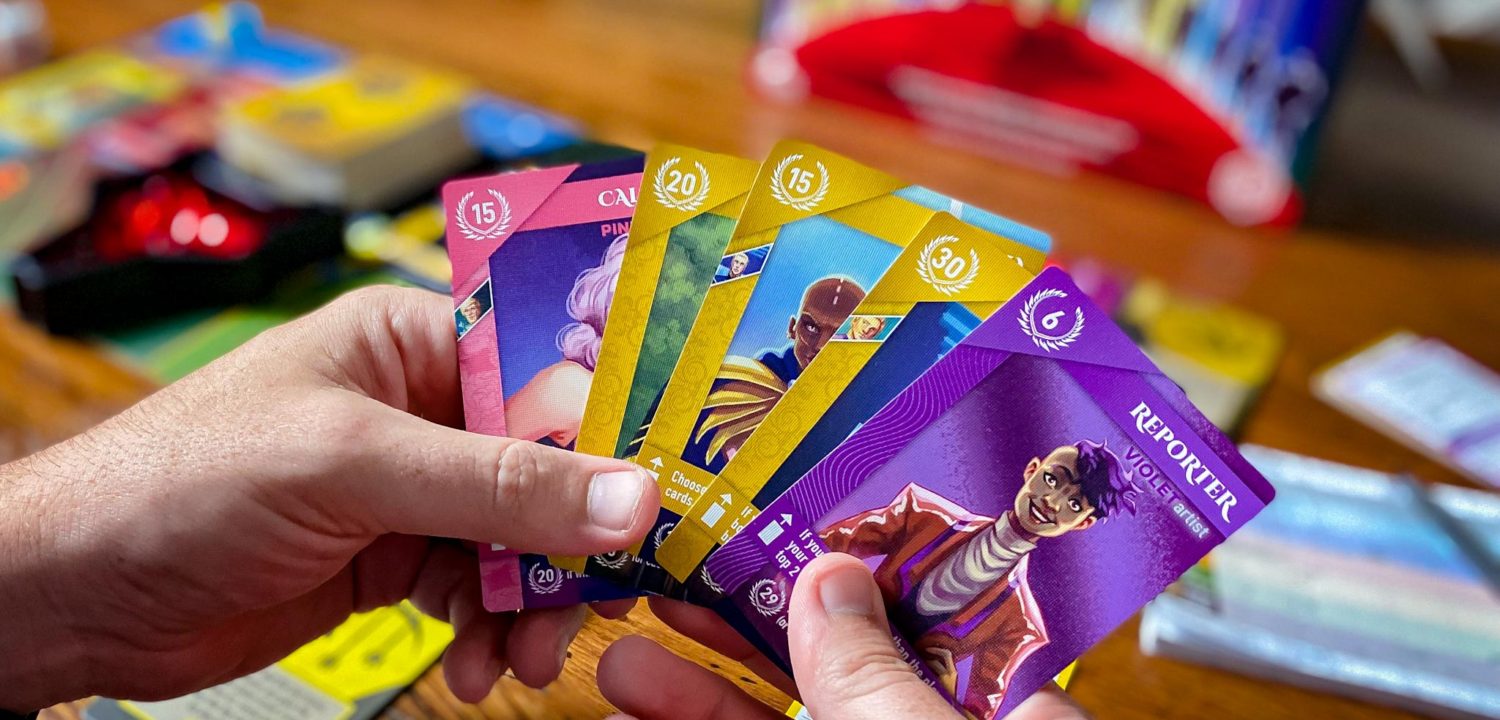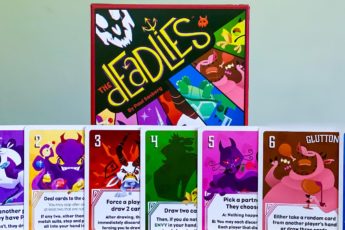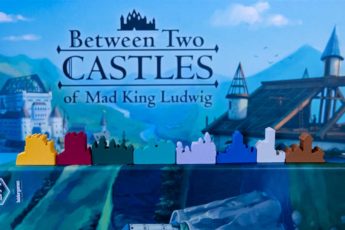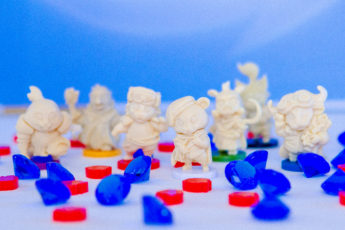Combining the adventure and fun from a book series with the strategy and challenge of a board game, Red Rising from Stonemaier Games is one we couldn’t wait to check out! But did it manage to pull off adapting the novels while also creating a fun game that holds up for readers and non alike?
We’ll discuss!
What Is Red Rising?
Red Rising is a hand-management, combo-building card game based off of the Red Rising series by Pierce Brown and inspired by the card game Fantasy Realms.
If you want a quick video overview, be sure to check out our TikTok of Red Rising!
In this game you’ll start with a hand of 5 cards. On your turn you’ll choose one of your cards to deploy to a location on the board, activating that card’s deploy benefit. You can then gain into your hand the top card from another location on the board or the deck while also gaining that locations benefit.
Location benefits allow players to advance their ship on the Fleet Track, Gain Helium tokens, Gain the Sovereign token (this also triggers your personal player/House ability,) or place an influence token on the Institute.
Each card in the game features a unique character from the novels in one of 11 suits. Cards have their own core value and end of game scoring conditions. The end of game scoring conditions require players to have in their hand specific named characters or card types in order for these points to activate. This means that a card with a core value of 10 could be worth far more that that at the end of the game if a player can manage to gain cards to activate its additional scoring potential.
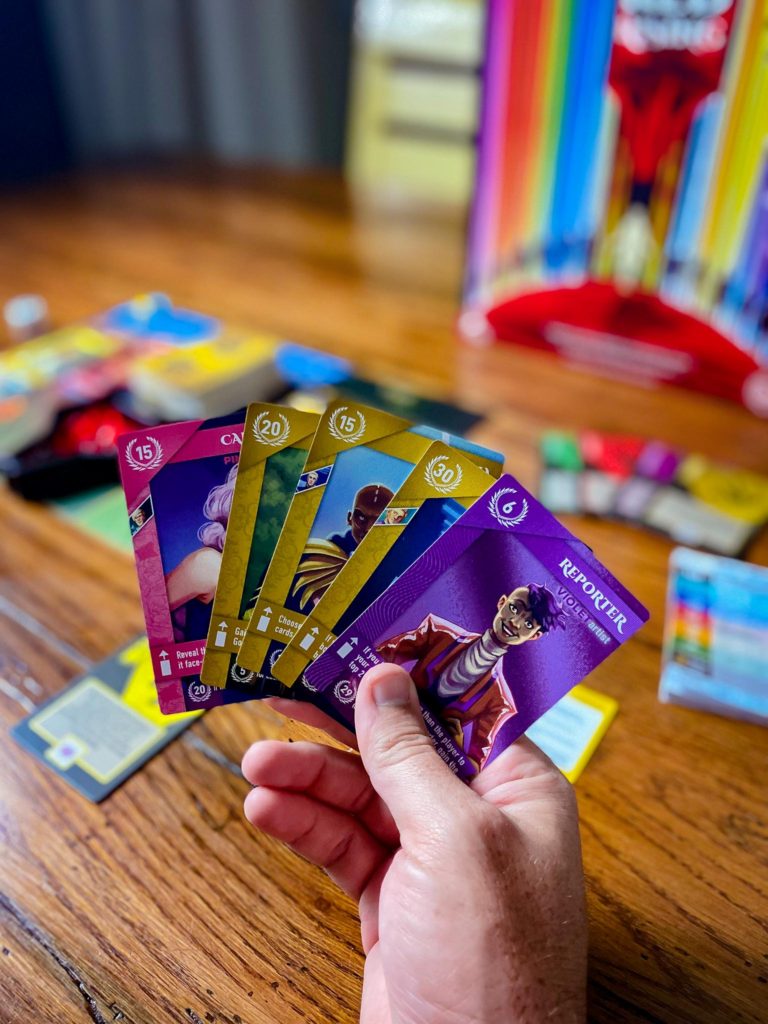
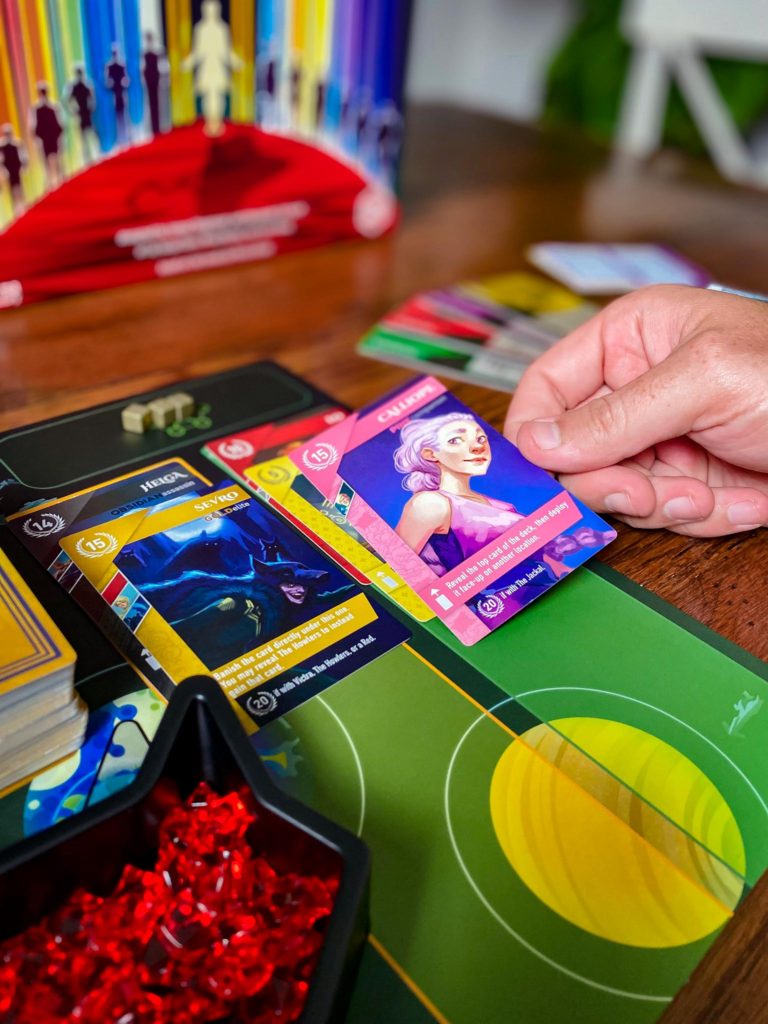
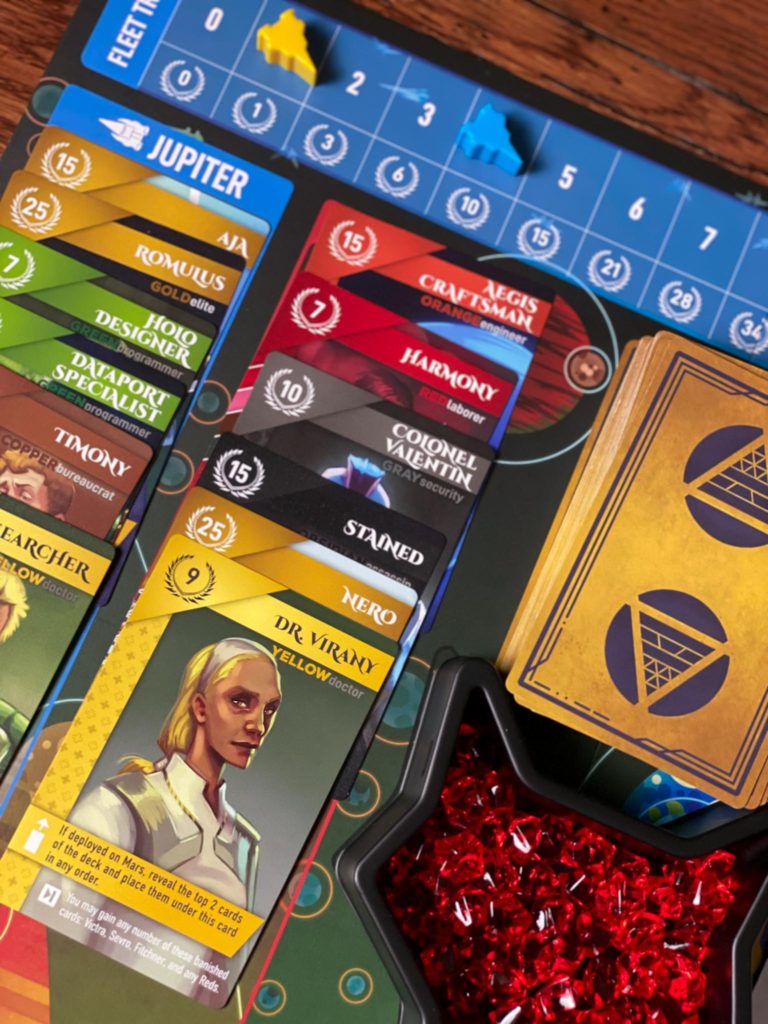
Game End
Red Rising ends when all three of the below are met by any combination of players or when one player meets two of the below conditions:
A player has 7+ Helium tokens, a player has 7+ Influence on the Institute, a player has reached or surpassed the 7 on the Fleet Track.
When that happens players finish taking their turns, trigger all end of game abilities, and then tally final scores. Players earn points from the total value of the cards in their hand, position on the Fleet track, number of helium tokens, having the sovereigns token, and their influence.
The player with the highest score wins.
What Do We Think of Red Rising?
Playing Red Rising was a fun experiment in discovering if knowledge of the book series was a benefit to both ones overall enjoyment of the game or their ability to be successful.
Adam has read the entire Red Rising series. I myself have not. I don’t find it particularly necessary to have read the novels before hand. If anything, you may end up wanting to read them. It’s hard not to imagine what relationships and alliances characters must have with one another as you see which cards score high (or low!) if they have another specific character in hand.
It was fun to see Adam notice the ways the happenings in the book were implemented in the game or how characters that he considered his favorites were imagined through the artwork.
Each and every card in the game is unique and there are a LOT of cards here. 112 to be exact. I really appreciate how many cards there are. Not only does this mean your game has more replayability, but it also increases the challenge of pairing specific cards together — there’s so many in the deck the one you need may not come out!
Thematically, for a series all about a social hierarchy system where characters from various factions must work with or against each other to gain or retain power and influence, this was a great game mechanic to pair it with. (Have I read the series? No. But I am a thirty something woman who lived through the YA dystopian novel crazes of The Hunger Games, Divergant, The Maze Runner, The Selection, Uglies, and Ender’s Game (to name just a few) that I think I’ve got the genre pretty well sorted. 😉 )
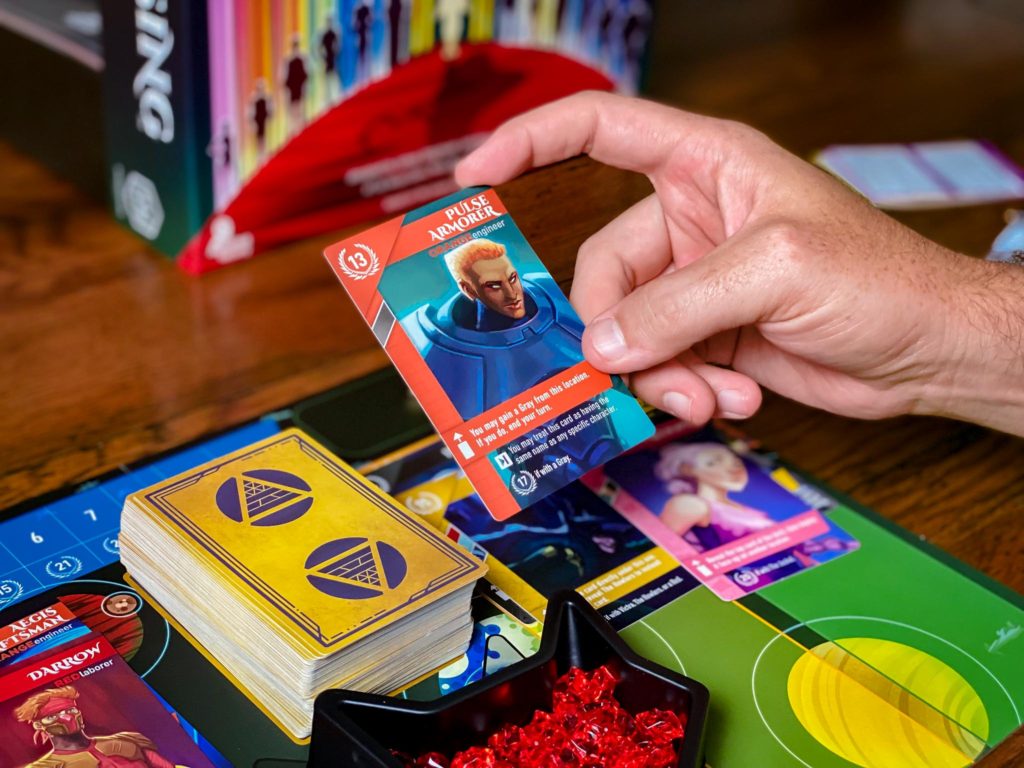
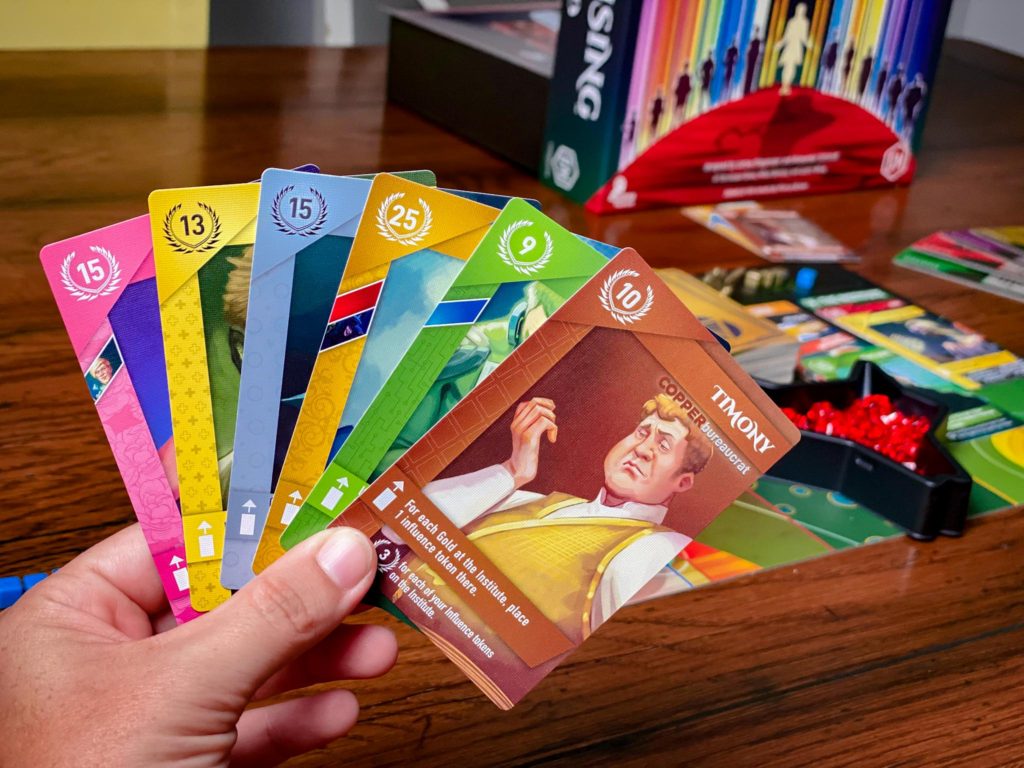
Combo Building Goodness
While I haven’t read the novels, Red Rising is not just based off of the books. Incidentally it is also based off of one of my favorite card games: Fantasy Realms. When I say favorites, I mean favorites. Fantasy Realms is for me a top tier card game that always leaves me gushing about it after every play and consider it a card game everyone should own. Red Rising copies the card mechanics of Fantasy Realms.
Just like in Fantasy Realms, each card in Red Rising has a base scoring potential as well as a larger scoring potential contingent on whether or not you can pair it with a specific card or card type. So the whole game you’ll be discarding cards from your hand to pick up other cards that you think will work better with what you have in your hand currently.
This can create so much fun tension for players. You’re constantly having to make a decision about which card you are willing to part with so that you can hopefully gain an even better card to increase your scoring potential. It’s a game of patience. Knowing when to hold onto a card and when to let it go. Forcing yourself to be patient to wait for a specific card to reveal itself while also being able to switch it up for a new plan before getting caught unawares.

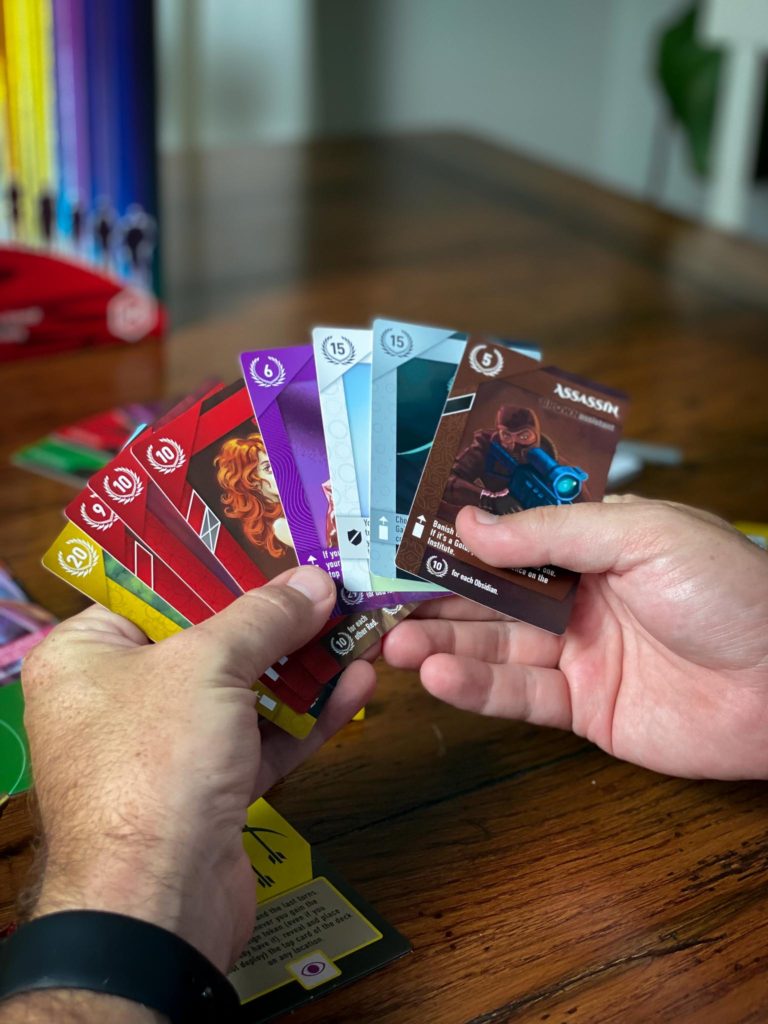
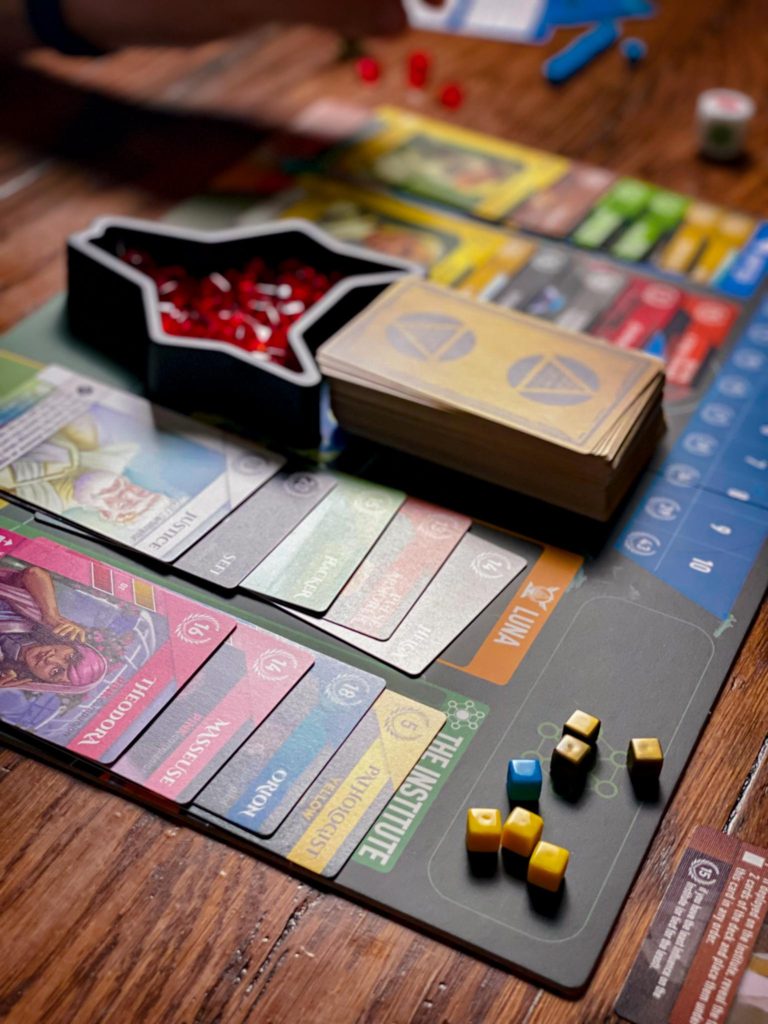
Too Much Going On
While building all these combos is fun and incredibly satisfying when it works well, the problem for Red Rising is that it takes the deliciousness of Fantasy Realms, implements it beautifully with its 112 character cards….but then muddies it all up with convoluted game play that drags out too long. Games take about 45 minutes to an hour or more depending on how long your fellow players have to agonize over which cards they want.
The best part about Red Rising is how it’s inspired by Fantasy Realms. But whenever I’m playing Red Rising, I find myself wishing I was playing Fantasy Realms instead. That small deck of cards packs a larger strategic punch and it does it in half the the playtime or less!
Fantasy Realms is beautifully simple and I think that’s truly where Red Rising goes wrong. All of the Deploy actions, location bonuses, helium tokens, fleet track, special abilities etc, just drag the game out while distracting from the real fun of it all.
Red Rising just feels a bit bloated. When trying to incorporate so much of the book elements into the game (characters, card suits/factions, fleets etc) it ended up dwarfing its best part. Even the attempt to build up a hand full of combo-ing cards is a bit deflated because the game drags out so long that, by golly, if you can’t build a decent hand then what were you doing??
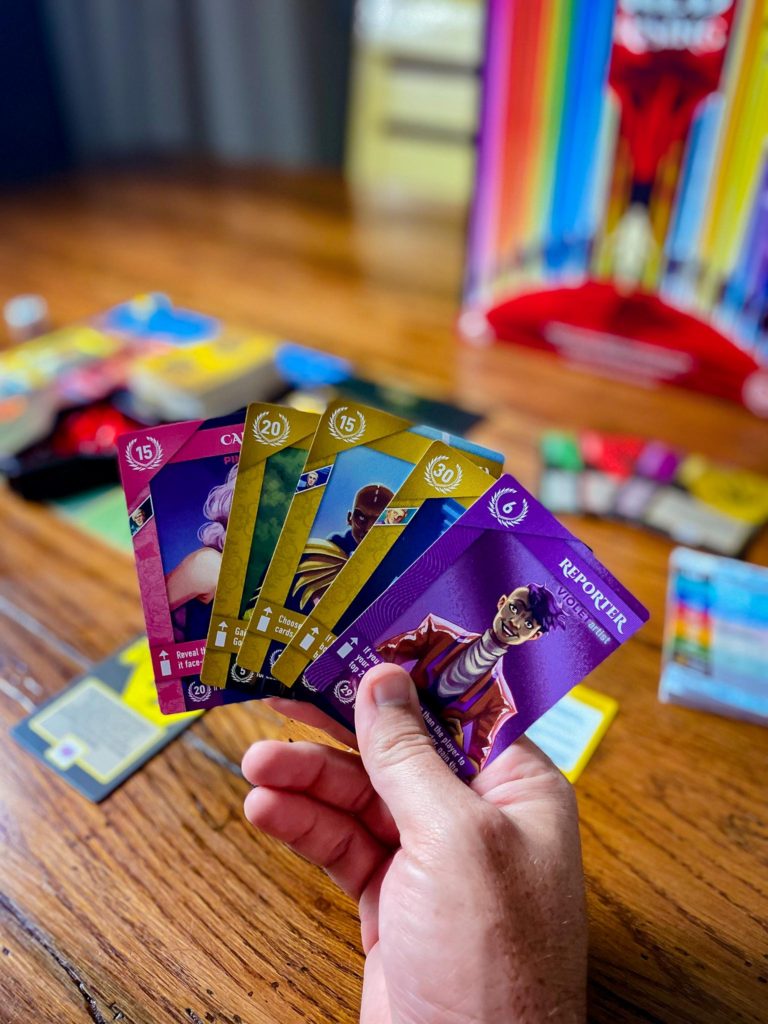
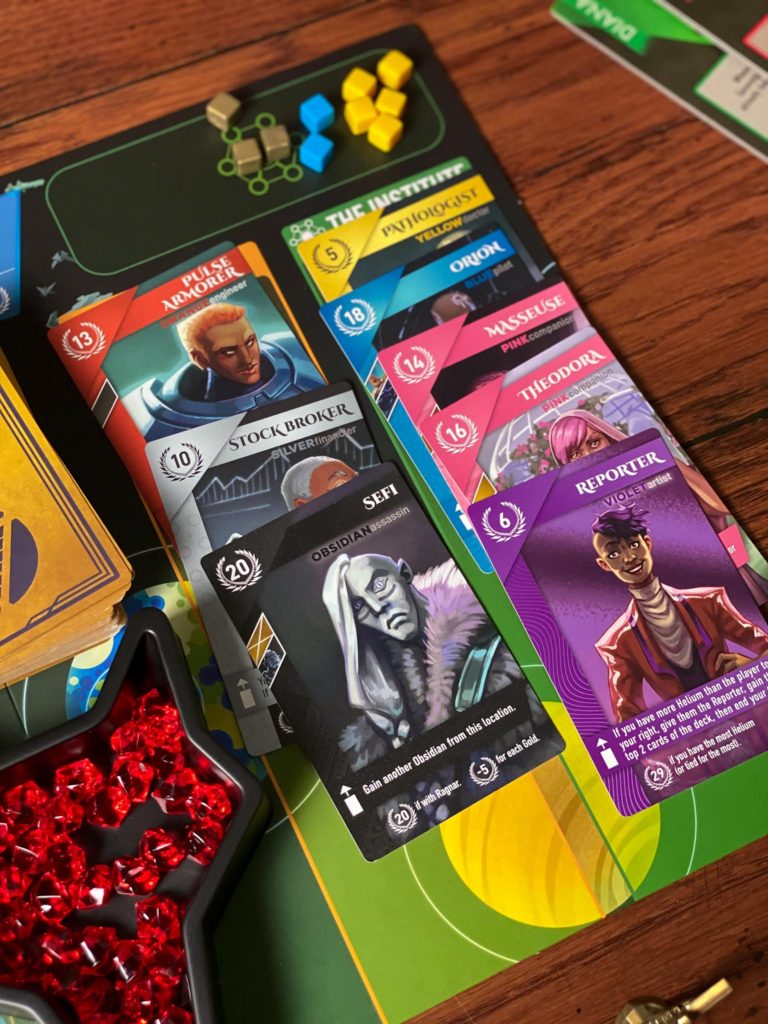
Summary
Red Rising is not a great game, but it’s also not a bad game. It’s just an okay game.
While inspired by Fantasy Realms, Red Rising just leaves me wishing I would have chosen Fantasy Realms instead. The combo building fun with the character cards gets drowned by all of the extra elements that drag the game out a bit too long.
Red Rising is a quite decent IP game and, from what Adam says, a good implementation of the books. I have no hesitation in recommending this to fans of the novels. While it is not necessary to have read the novels to enjoy playing the game, you’ll without a doubt appreciate the little nuances and nods to the story woven into the theming and design of the game.
While I don’t think it will stay in our collection forever, I am really glad that Red Rising is raising the bar for what players should expect from an IP game in the future. I hope more publishers will feel confident to create higher caliber strategy games for these audiences.
To pick up a copy of Red Rising click here.
For the Red Rising novels, here.
Pick up a copy of Fantasy Realms here.
Find all our top game recommendations on our Amazon Storefront
A special thank you to our friends at Stonemaier Games for sending a copy of Red Rising for review. As always, our thoughts and opinions are our own.
If you liked this post, you may also like:
Viticulture Review
Why We Love Marvel Legendary
8 Games We Played over the Holiday


